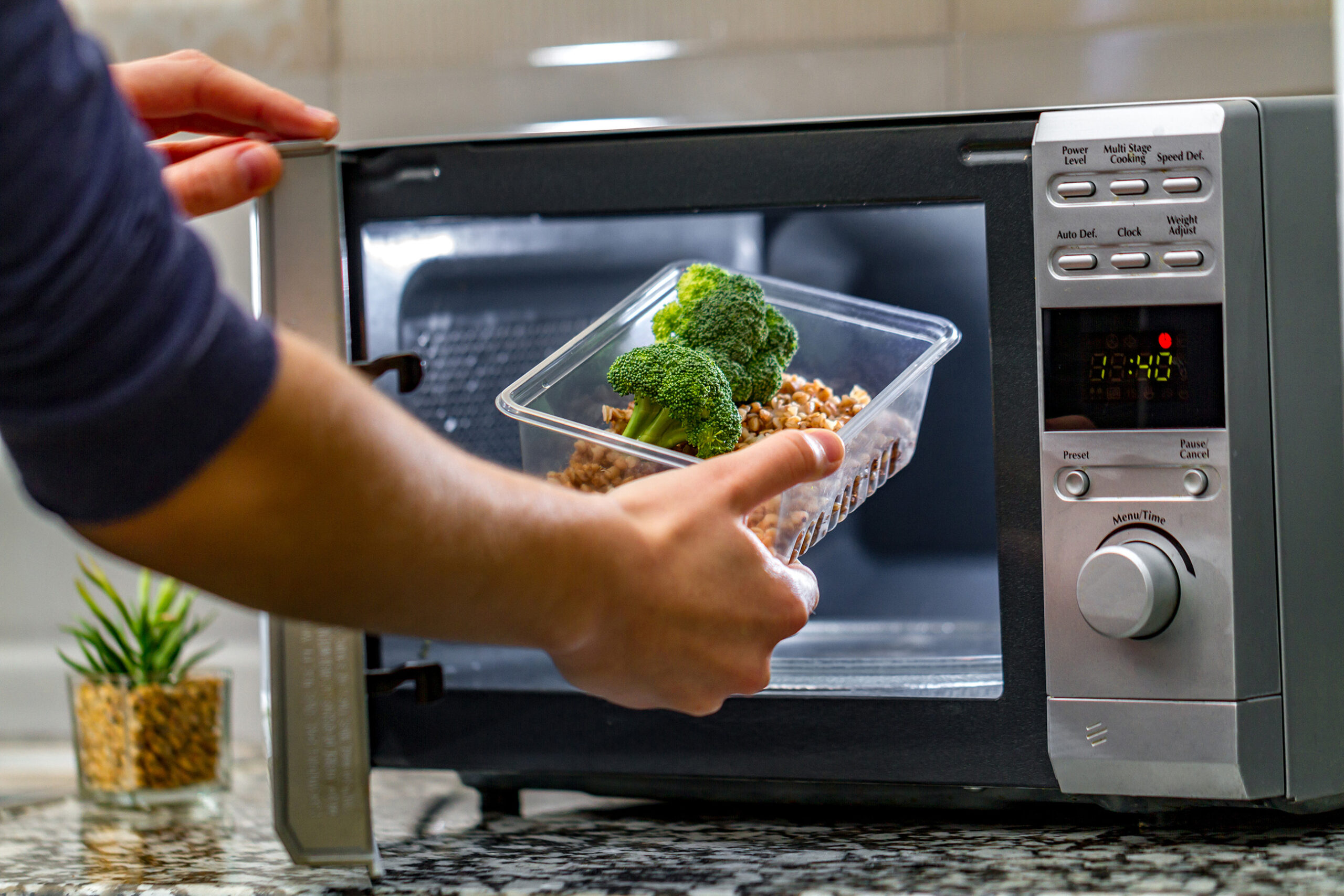Can plastic be safely placed in the microwave? The reality is that this answer depends on several factors. As a general rule, food authorities prioritize searching for the label: “microwave safe” or using glass or ceramic.
The microwave has become an indispensable ally in our kitchens. However, a crucial question arises: is it safe to heat food in plastic containers in the microwave? The answer, as so many times, is not so simple.
Surely you have experienced this, you grab a tupperware, take it to the microwave and stop dead. Doubts. Is it safe to put plastic in the microwave? Not knowing if a plastic container is suitable for heating like this is common.
The microwave operates through energy waves that heat food by vibrating water molecules. Although this is harmless to food, certain plastics can degrade and release microplastics and harmful chemicals.
It’s not just about melting, studies cited by Tom’s Guide in this regard indicate that microwave heating can cause the release of trillions of plastic nanoparticles, especially in containers not designated for this use.
Not all microwave plastics are the same
Some, identified as microwave-safe, can withstand high temperatures without breaking down. These include plastics numbered 2 (HDPE) and 5 (PP).
On the contrary, plastics numbered 1, 3, 4, 6 and 7, including polystyrene (styrofoam), are not suitable for the microwave. Styrofoam, for example, can release a carcinogen called styrene into food.
Additionally, there are concerns about chemicals such as BPA and phthalates, which can leach from plastics when heated and pose health risks.
Baby bottles and containers for baby food have specific regulations
The Food and Drug Administration requires certain products, such as baby bottles and infant formula containers, to be BPA-free, but not all plastics meet these regulations.
Microwave safety not only depends on the type of plastic but also on the specific use. For example, restaurant soup containers may be more heat resistant than those intended for less liquid foods.
To be safe, it’s a good idea to look for the “microwave safe” seal or opt for alternatives like glass or ceramic. Ultimately, the decision to use plastic in the microwave depends on its type and the temperature needed to heat food.
The safest option with the microwave, according to science, is to avoid plastics that are not suitable for microwaves and prefer materials such as glass or ceramics, which do not present these health risks.

